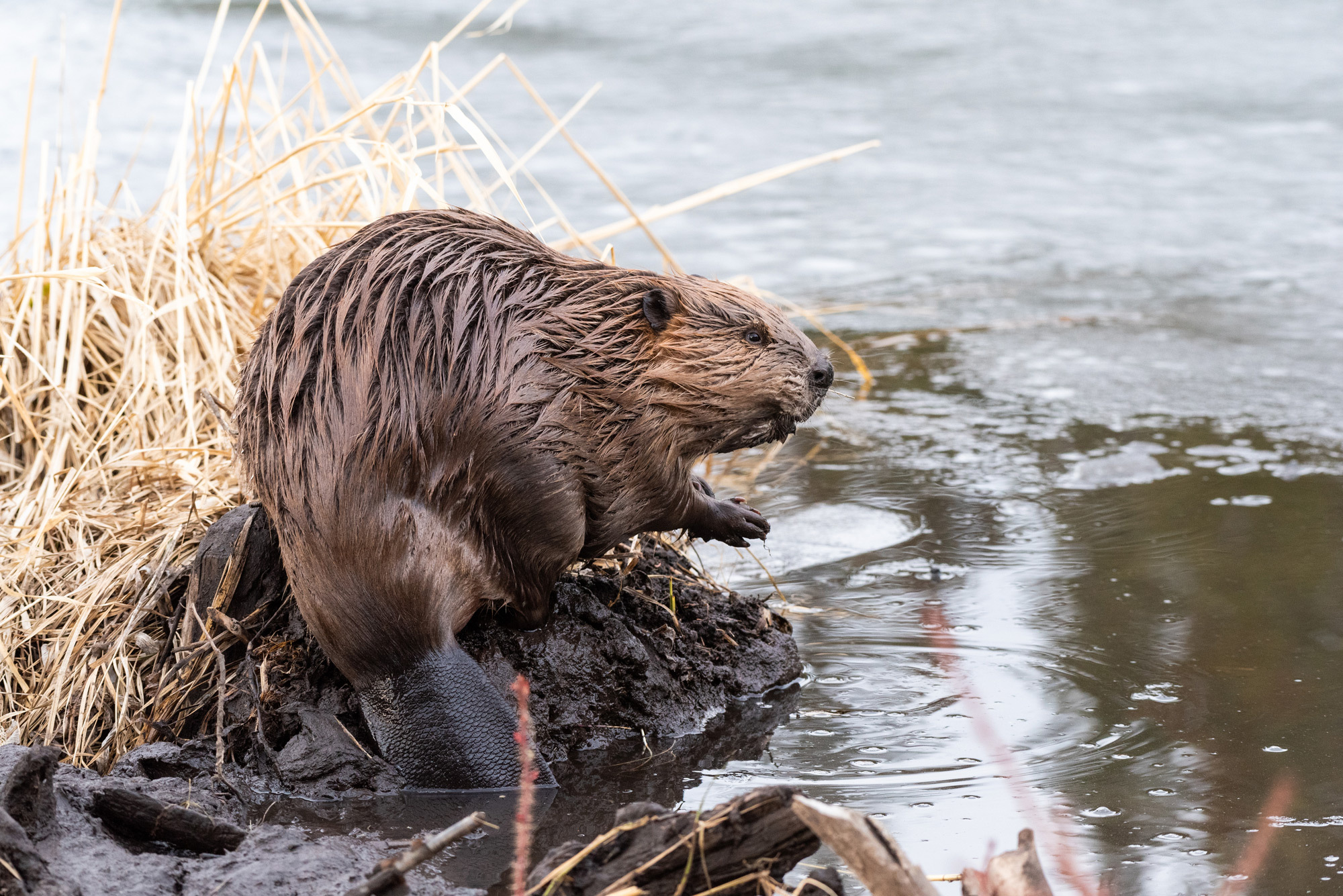Beaver
The beaver, known for its remarkable engineering skills and persistent work ethic, stands as a symbol of Canada and epitomizes the rich biodiversity of Alberta. This semi-aquatic rodent has played a significant role not only in shaping the physical landscapes with its dam-building but also in the historical and economic narratives of the nation.

More on Beaver
About
Beavers (Castor canadensis) are the second-largest rodents in the world. Their stocky bodies, webbed feet, and iconic flat tails make them highly adapted to aquatic environments. Beyond these physical characteristics, beavers are renowned for their dam-building abilities. Using a mix of logs, sticks, mud, and stones, they create intricate structures that transform streams and rivers into ponds. These ponds serve as habitats for various species and play a crucial role in maintaining Alberta's wetland ecosystems. The beaver's lodges, often built within these ponds, serve as safe havens against predators and the harsh Canadian winters.
History
The beaver's influence extends well beyond its ecological role. For Indigenous communities in Alberta and throughout Canada, beavers have historically been sources of food, medicine, and materials. Their pelts, recognized for their warmth and durability, became central to the fur trade in the 17th and 18th centuries, drawing European traders and shaping Canada's economic and territorial evolution. Such was the significance of the beaver in Canada's history that it was chosen as a national symbol, gracing the country's five-cent coin and various emblems.
Ways To Cook
While today the beaver is more celebrated for its ecological impact and symbolism than its culinary value, beaver meat is lean, with a taste often compared to beef, but with a unique, wild undertone. It can be roasted, stewed, or even smoked. The tail, in particular, is considered a delicacy by some, rich in fat and flavour. In addition to its meat, the beaver's castor sacs produce castoreum, which has been used traditionally for medicinal purposes and, more recently, as a flavouring agent in some foods and beverages. Though not a common feature on modern Canadian menus, it is still trapped primarily for its fur, with responsible hunters using all other parts of the animal for food and medicine.
